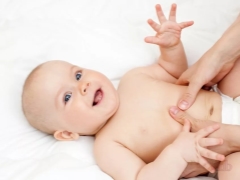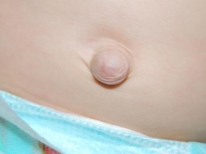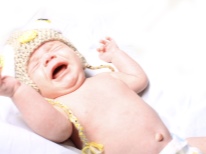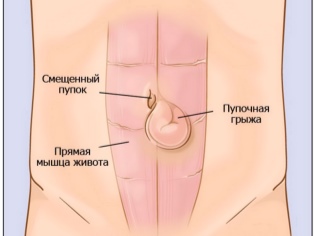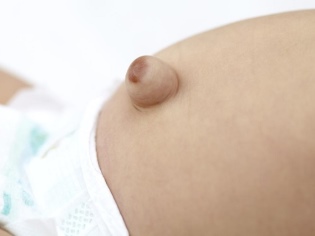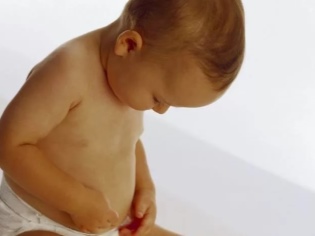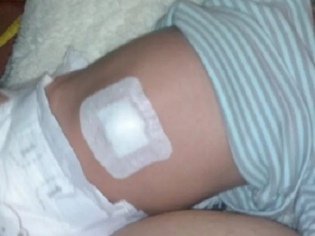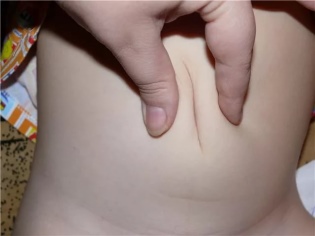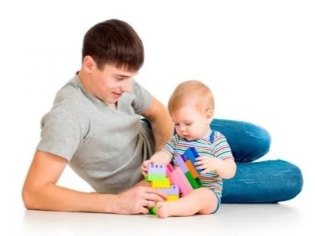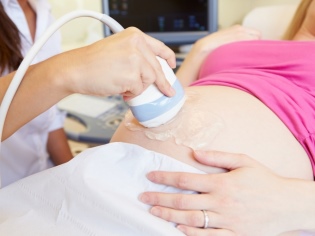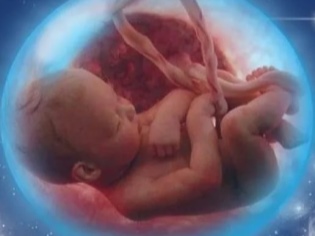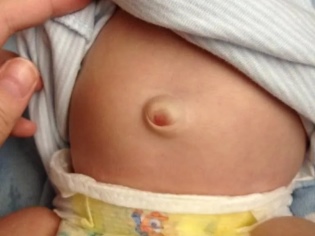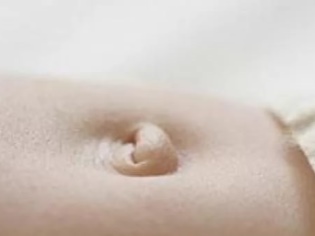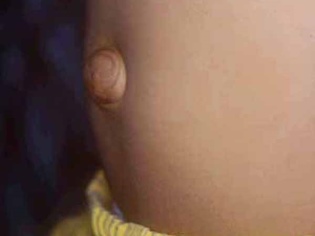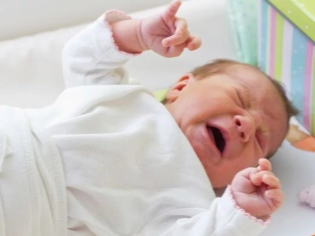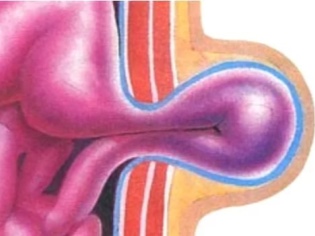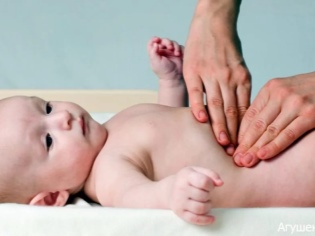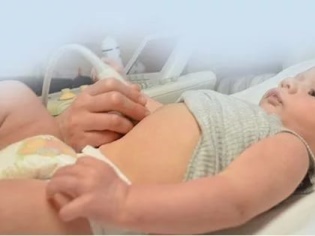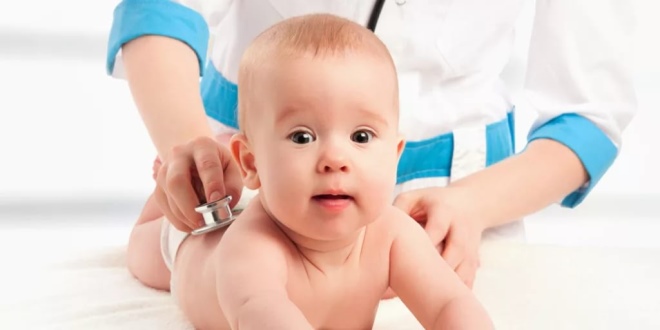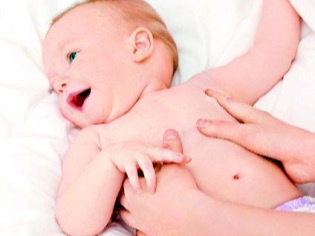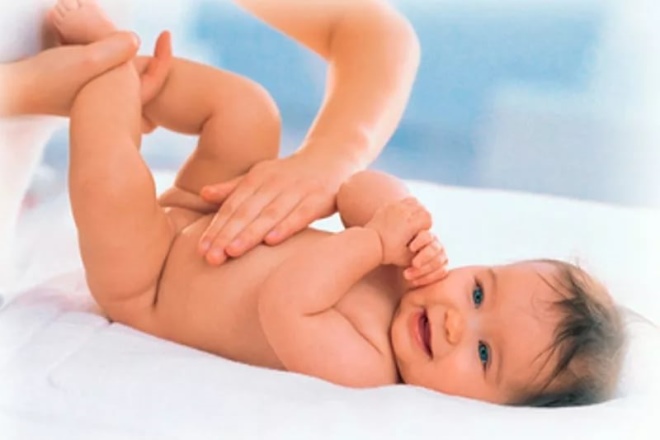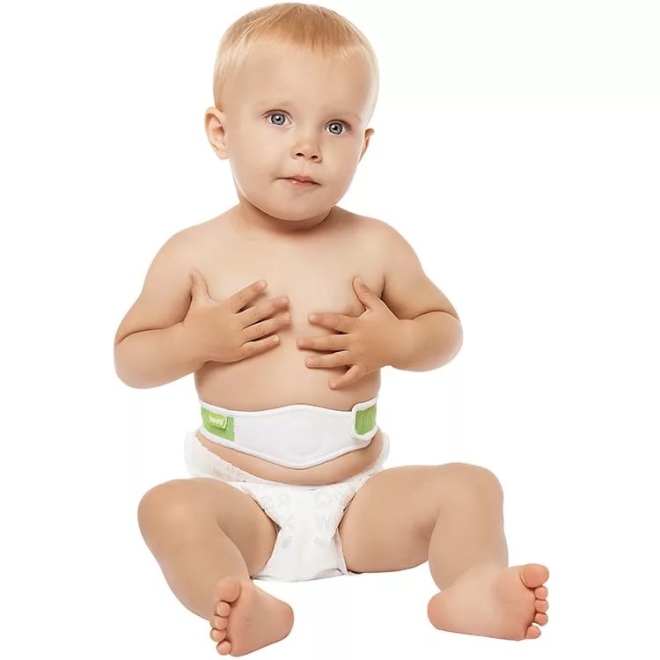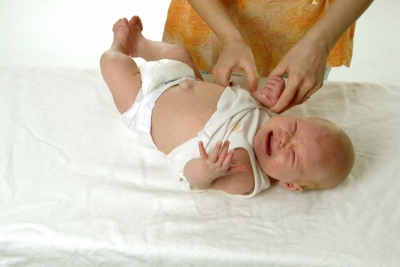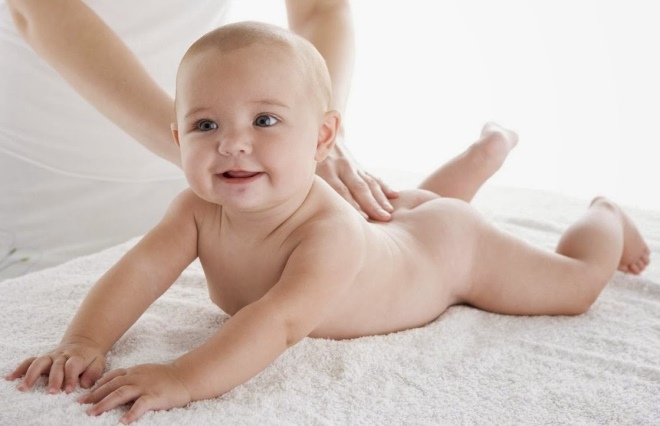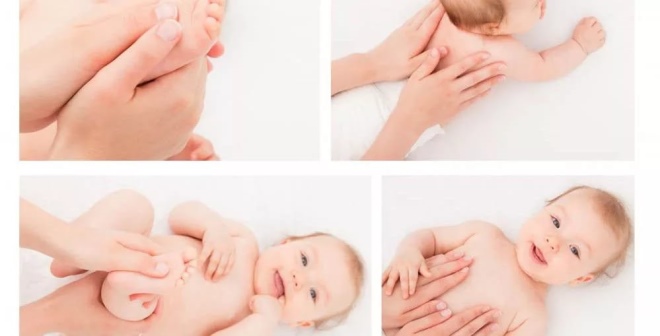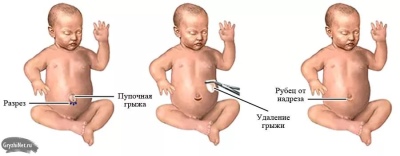Umbilical hernia in newborns and infants
An umbilical hernia in babies under one year old is a problem that causes well-founded anxieties and anxiety in parents. Why it appears and how to treat it is a question that worries all moms and dads who have babies who suffer from this pathology. Can such a children's hernia go away without surgery, we will tell in this article.
What it is?
Umbilical hernia, like all other types of hernia, is a sign of weakness of the abdominal wall. It represents the output of some internal organs, which normally should be located in the abdominal cavity, outside without damaging the integrity of the skin and subcutaneous tissues. This becomes possible when there is a hole in the abdominal wall.
It can be either pathological (in case of divergence of the muscles, a large “gap” between the tissues), and quite natural, which is the umbilical hole.
In newborns, the umbilical wound is formed for quite physiological reasons. When the crumb is in the womb, the umbilical cord connects it to the placenta. The baby seat feeds the baby, provides him with oxygen and nutrients necessary for normal growth and development. The umbilical cord is a kind of transport route through which food and oxygen are supplied to the baby, it also performs the function of diverting spent carbon dioxide and metabolic products.
Inside the umbilical cord there are two arteries and a vein, the blood from the mother enters the arteries enriched with oxygen and beneficial substances from the mother, the vein is drained by the fact that the baby no longer needs - waste products. After birth, the umbilical cord is no longer necessary, because placental breathing changes to pulmonary at the moment of birth, and the child can eat from this point on through the mouth, quite in our usual way. The umbilical cord cut, pinch the cross-sectional area to avoid blood loss and tied.
However, inside the abdominal cavity in boys and girls, part of the umbilical cord remains. It is called the umbilical ring from birth. Normally, this inner part of the umbilical cord should be closed with connective tissue during the first month of life, while the baby is considered a newborn. However, this process can be complicated by many factors as a result of which full closure does not occur.
Thus, the umbilical ring continues to communicate directly with the abdominal cavity, and part of the internal organs, for example, the intestinal loops or the omentum, can exit through this communicating "channel". This happens if the pressure in the abdominal cavity exceeds the ability of the peritoneum to resist.
A hernia consists of a hernial sac, represented by the weakest peritoneum and its contents - those organs or their parts that have come out. The umbilical ring at the same time performs the role of a hernial ring - the place through which the exit became possible. These terms are important to remember in order to understand what is happening with the child and what the help should be. According to statistics, a hernial pathology of the navel occurs in every fifth full-term infant.
Among babies who hurried, and came to this world before the time allotted to them by obstetricians, a hernial formation is observed in about every third peasant.
The umbilical hernia is one of the few hernias in the human body that can "dissolve" on its own, with the vast majority of toddlers leaving no trace of it by the year. Naturally, parents will have to make some effort to this. Only in 3-5% of babies the problem persists up to 5 years. But modern medicine can also help them.
Causes and mechanism of occurrence
A navel hernia may be evidence that during the prenatal development of the child something went wrong and the abdominal wall did not form properly. Muscle weakness and weakness of the connective tissue leads to defects in the development of the peritoneum, with the result that some of the internal organs of the baby "pushes" at the junction with the umbilical cord before birth. This pathology is called congenital hernia.
With the acquired form of hernial disease, the baby may begin to suffer if the obstetricians made a mistake when cutting off and clamping the umbilical cord, if an infection occurred, and because the umbilical ring did not close in the first month of independent life.
The simpler form of the hernia is straight. The hernial sac, along with its contents, “peeks out” directly through the navel ring. With a more complex - oblique form - the hernial contents in the bag first pass through the “pocket” between the transverse fascia and the white line of the abdomen and only then exit through the ring.
Herniated umbilical formations in infants are almost always different fair mobility - they can be adjusted without much effort. However, albeit rarely, in children, there are complex unmanaged hernias. The ability of the sac to mobility is due to the size and elasticity of the hernial ring (in this case, the umbilical ring). Narrow gate - less mobile hernia, wide - more mobile.
Coming out hernia always under the internal pressure that forms in the abdominal cavity.
This pressure in a child increases dramatically in certain situations:
- with a strong tearful crying and crying;
- during attempts at defecation, especially if it requires an effort (constipation, for example);
- with a strong cough;
- with a swollen tummy in children with increased gas formation and strong infantile colic.
If there are prerequisites (weak umbilical ring, slow overgrowing of the navel from the inside, congenital weakness of the abdominal wall), then such situations most often lead to the loss of part of the organs and the formation of a hernia. Separately, you should put the cause of the pathology, in which there is a share of the fault of the parents. The child is too early to plant and put in a vertical position. For these purposes, in the arsenal of moms and dads there are a lot of devices, for example, walkers and jumpers.
However, in the vertical position, the pressure in the abdominal cavity increases, and this is a factor that provokes the appearance of pathology.
Until the child is 9 months old, it is safer to trust nature, and she arranged everything so that before taking an upright position on her own two feet, the child goes through several preliminary stages - crawling and sitting, it is they who allow the muscles of his tummy to get stronger and adequately accept later increased internal pressure without the formation of hernias.
Symptoms and signs
Congenital hernias that appear in a child still in the womb can also be seen by the diagnostician at the next ultrasound at the antenatal clinic or in the maternity hospital. These are usually quite severe pathologies in which the defect of peritoneal development is extensive. Most often, a hernial sac with such a congenital hernia leaves several organs - 2-3 intestinal loops, omentum, liver. But the hernial disease alone is not limited to everything, and such babies overwhelmingly have gross genetic disorders and diagnoses that are incompatible with life. Acquired hernias in this regard have more positive projections.
It is possible to determine a navel hernia in an infant starting from 30 days of his own life outside of his mother's abdomen. By this time, the neonatal period ends, the umbilical wound heals.
It is not necessary that the hernia will appear immediately, it can form and be visualized at any time - both in a three-month-old baby and in a half-year-old child.
That is why it is important to be able to recognize the pathology and take timely measures to prevent dangerous consequences. Hernia is always determined in the area of the umbilical ring. It looks like a round or oval nodule, as well as an irregular shape. It may be quite insignificant - from half a centimeter in diameter to a rather large one, whose diameter exceeds 5-6 centimeters.
When the hernial sac contains only intestinal loops, the formation looks slightly bluish, if you really try, through the delicate skin of the infant you can see the intestinal wall. When a part of the omentum, the liver, appears in the sac, the node appears reddish. This looks, of course, frightening, but parents should understand that the hernia itself does not cause the child pain and suffering. It does not hurt, does not itch, does not itch, and in general does not care about it.
It is possible to determine the umbilical hernial pathology in an infant baby during periods of crying, coughing, when the baby poops. At another time, when it is calm and does not strain the tummy, the hernia is completely invisible. With a light, gentle pressure on her finger, adults may notice that she immediately goes back into the abdominal cavity, but then, unfortunately, returns again. Other symptoms cause a lot of questions. So, some doctors claim that the umbilical hernia affects the digestion, the behavior of the baby.
She is trying to explain restless sleep, poor appetite. However, this position does not stand up to criticism, because many children without such a pathology also have a bad dream, and they do not rarely demonstrate their unwillingness to eat.
Such a nodule in the umbilical region has practically no effect on the intensity and frequency of colic, constipation, and other typical infant problems. And frequent regurgitation and nausea are most often caused by overfeeding, and not by the presence of a hernial sac in the navel.
Symptoms in the form of vomiting, acute pain, abdominal distention from overflowing with gases, are characteristic only of pinching of the umbilical hernia. If for some reason the ring (hernial ring) is compressed or the feces accumulate in the loops inside the bag, the hernial bag is fixed outside, the organs are clamped in it. To the intestinal loops and other contents of the sac, the blood stops flowing in the necessary quantity.
The clamp causes a strong pain attack, the child can not straighten, constantly screaming. The hernia itself at this moment looks filled, tense, painful. It is already impossible to introduce it inside, and you should not try. Since the child needs an urgent operation, the bill goes not even for hours, but for minutes.
Danger
A small undiminished hernia does not pose any danger to the life and health of the baby. It is dangerous only because there is a risk of infringement. However, practice shows that pinching in children from 0 to 12 months is extremely rare, since both the umbilical ring and the intestinal loops are very elastic and mobile.
If the infringement did happen, the list of possible threats expands dramatically. The contents of the hernial bag - internal organs and their parts, deprived of blood supply, quickly begin to "die off".
Necrosis of tissues develops rapidly, and during the operation the surgeon will have to completely remove not only the hernia, but also the dead parts of the intestine, omentum, liver. Delay threatens the development of gangrene, which is deadly for a young child.
Diagnostics
The doctor-surgeon can diagnose the child accordingly. He will inspect the toddler in a horizontal position. Tests with coughing and vertical tests for infants are not used.Usually, a visual examination of a specialist is quite enough, in which he palpates the umbilical region and determines the approximate dimensions of the formation and the gate.
To understand whether it is direct or oblique, and, in addition, to clarify the location of the dislocation and the probability of infringement, an abdominal ultrasound scan will be assigned. Ultrasound scanner will allow to determine with great accuracy which organs are part of the bag. If there are concerns about possible complications (adhesions, W-shaped bend bowel loops), the child will have to carry out a special method of examination - irrigoscopy.
The procedure is not very pleasant, but necessary. The baby will be given an enema, for which not water will be used, but a special solution that will be visible on the X-ray. So the doctor will receive a detailed picture of what is happening inside, and will be able to decide on treatment tactics.
Treatment
Despite the seriousness of the situation, complex and specific treatment umbilical hernia does not require a child up to one year old. After the diagnosis has been established, the expectation tactic is preferred over 95% of cases. The only way to fight a hernia of any origin and location today is a surgical operation on hernia repair.
The umbilical pathology, in turn, is one of a kind, which can begin to reverse development, regress. And because the indication for surgery in newborns and infants can be only one thing - infringement.
In all other cases, treatment is possible at home. In this case, something to treat, do not have to give medicines. But the problem should be carefully observed and some methods and methods should be used that will make the reverse development of the hernia most likely.
- Sticking up the plaster. This method has proven itself, however, there are several important points. A hernia before sticking should be adjusted, and it is not recommended for parents to do it self-harmly, so as not to harm the toddler. Inappropriate actions can provoke a spasm of the navel ringlet, which will inevitably lead to pinching and urgent surgery.
The surgeon must manually guide the bag through the skin. He will show parents how this is done, and tell you how to properly glue the hernia with adhesive tape for more reliable and safe fixation.
Then mom and dad will be able to change the plaster on their own, carefully tracking whether inflammation has begun underneath or if a child has a local allergic reaction.
From time to time, the child will have to be shown to the surgeon. If the hernia progresses or grows in size, another method of fixation may be chosen. Parents must choose a high-quality and hypoallergenic sterile patch. It is possible to bathe a child with a sealed navel, but after water procedures, the dressing should be changed.
- Bandage. Wearing such a special orthopedic belt allows you to securely fix the hernial bag in the correct position, inside the abdominal cavity. The device allows to balance the internal pressure and external resistance.
You can wear a bandage after the operation, before it, and even instead of it. But for this, the doctor must correct the hernia and show how to put on and fix a bandage on the baby’s tummy.
The belt is soft, very elastic, it will not give the child any discomfort. You don’t need to wear anything under it. A set of special inserts for the problem area is attached to most of these products. A small hernia can successfully regress after a couple of months of wearing a bandage. It is contraindicated only to children with lesions of the skin in the area of fit of the product.
If the stomach has an allergic rash, infectious rash, eczema, the bandage can not be worn.
- Massage and gymnastics. Massage and gymnastics to the newborn and nursing baby, aimed at strengthening the abdominal muscles, the mother can do on their own.It does not require financial costs and a masseuse or doctor diploma. The surgeon who has made the diagnosis and the local pediatrician can show the techniques. The impact should be mild and painless. Circular movements along the belly around the umbilical region are useful.
Massage manipulations are combined with laying a toddler on the tummy. This allows you to strengthen not only the abdominals, but also the obliques.
Useful and coups on the side of the supine position. To do this, it is enough just to slightly pull the baby by the opposite handle (so that he turns on his left side, pulls his right hand). Gymnastics is rather a fortifying measure. The main exercises are bending and extending the legs, bringing the legs to the stomach, spreading the legs in an arc. It is better to perform gymnastics once a day, in the morning, and massage can be done before each feeding, but not after it, so as not to provoke regurgitation.
- Folk methods. The most favorite way in the people is to tie a five-ruble coin to the navel. He is known to all and, at first glance, does not cause questions. In fact, such a "treatment" is quite dangerous and useless.
Piglet does not sufficiently fix the hernial sac in a stable position and at the same time the probability of infection of the navel is incredibly high.
Well, if you really want to somehow fix the hernia, it is better to use safer ways - buy a bandage or adhesive plaster.
Tips to water the baby rhubarb decoction, as well as smearing the navel at night with butter and propolis, can only add to the hassle of parents. After all, decoctions and propolis can cause severe allergies in infants.
The benefits of such procedures are not proven at the same time. The ability of the pediatric hernia of the navel to regress is often used by various-sized charlatans who propose to save the child from this misfortune for once and for all.
Parents should not turn to such "healers", since this is always associated with the risks of pinching as a result of inept and incorrect actions of non-professionals.
- Operation. Planned hernia surgery is done if the hernia did not pass by 6-7 years. In infants, there is no need to remove something in the planned mode.
If there is no infringement and no emergency surgical assistance is needed, no one will operate on the baby. In emergency surgery using the method of hernioplasty. At the same time, the doctors decide whether to keep the contents of the hernial sac or not. It depends on whether the internal organs are affected by the infringement. If not, then the doctors set aside the hernia and suture the hernial ring.
For fixation, use either the child’s own tissues (tension method) or a special mesh implant (non-tension method). Today, medicine can offer parents not only standard methods, but also laser operations.
Prevention
To prevent a hernia from developing, preventive measures should be practiced from the very birth of a child:
- Do not allow long and tearful crying.
- Do not allow prolonged constipation, if necessary, use an enema or a mild infant laxative.
- With strong colic, it is necessary to use means that reduce gas formation in order to prevent bloating.
- Starting from one month of age you can teach your child to swim, it allows you to quickly strengthen the abdominal wall.
- Timely and properly treat respiratory diseases associated with the appearance of cough.
- Do not throw the child up, as this will increase abdominal pressure dramatically.
- Do not get carried away for too long tight swaddling.
About what is hernia in children and what to do with them, see the next video.
